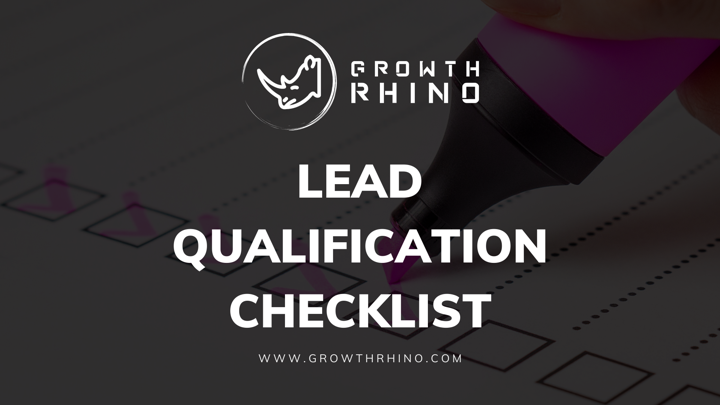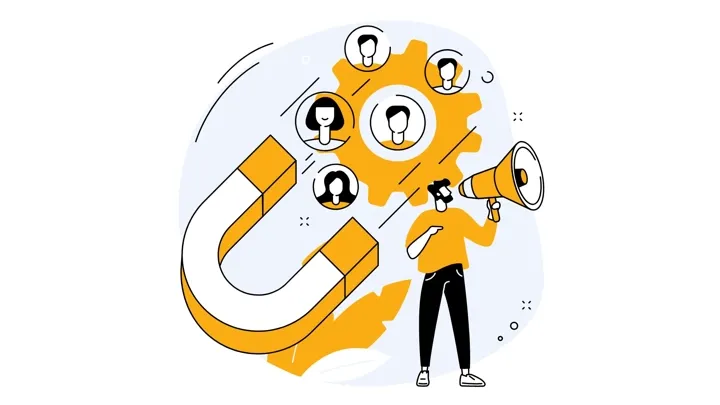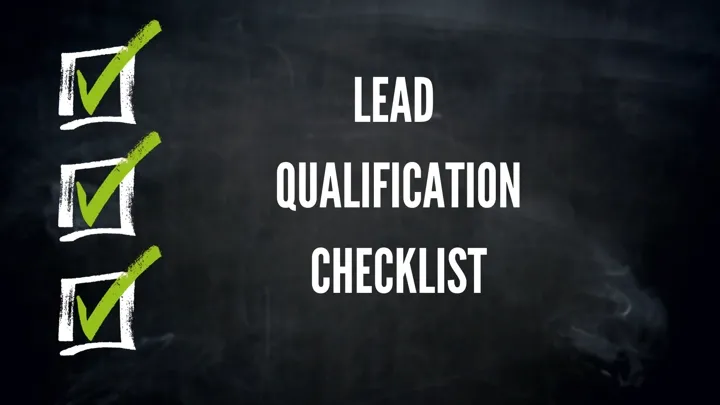
Sales qualification of leads has traditionally been a time-consuming and labor-intensive procedure. Obtaining leads is a task in itself, but you must also assess whether the lead qualifies as a sales prospect, which takes effort, research, and frequent direct contact with prospects.
The excellent thing is that there are a variety of tactics, methodologies, and structures that may help you score, qualify and move leads through the sales process more effectively by easing the lead qualification process.
To make better decisions about whether leads are worth moving ahead in the sales cycle without wasting time and resources trying to convert them into customers, you must first understand the prospect qualification checklist before you begin the lead qualification process.
Everything you need to know about lead qualification, including lead qualification strategies and techniques, qualifying questions, and tools that can produce positive outcomes, can be found in this article.
What Is Lead qualification?
The process that determines the chance of a lead becoming a customer is known as lead qualification.

Both inbound and outbound initiatives are intended to gather leads or potential customers. These potential customers who've demonstrated interest in your product or services through words and deeds like visiting your website, subscribing to blog content, participating in a course, or retrieving an eBook are all examples of lead generation, which is typically driven more by marketing.
Identifying a lead based on its willingness and readiness to buy is aided by lead qualification criteria. As a result of this qualification, one can separate the hot, warm, and cold leads with the most and least potential of making a purchase.
Did you know?
Uber, Microsoft, Google, and Yamaha are just a few of the well-known firms that use lead generation strategies. They've formed partnerships with various lead generation organizations to deliver robust inbound and outbound solutions.
Ways to Qualify Leads:
A qualified lead is a prospective future customer who meets certain conditions established by your company. Only willing leads can be categorized as qualified leads, which means they freely and willfully provided information. So purchased leads and databases do not constitute qualified leads.
Consumers or businesses who might be a suitable fit for your product or service can be referred to as potential leads. However, not every lead is worth following up on. An example will be if you sell and lease copiers, you might approach a potential lead and learn that they have recently signed a deal with a competitor. You make a note to call them a few months before their contract is up, and continue on to other prospects because they're unlikely to make any adjustments now.
Qualifying a lead helps save time and money by preventing you from pursuing a prospect who isn't prepared to invest in your product or service. Ask questions to determine whether a consumer is a good lead qualification candidate to qualify.
Lead Qualification Criteria: Top 5 Things to Remember:
The five questions your lead qualification checklist needs to have are the following:

1. Is the person truly interested in what I'm selling?
2. Is there a demand for my product?
3. Does the person have the budget to buy what I'm selling?
4. Is there urgency for them to buy what I'm selling?
5. Does the person have the ultimate decision-making function?
1. Is the person truly interested in what I'm selling?
You'd be amazed at how many salespeople never ask this question, assuming they're talking with decision-makers. Have you ever finished a closure and been told, "Well, I'll have to send that one to management and then see what they think?"
2. Is there a demand for my product?
It all starts with the phrase "Walk me through it." If you have a pipeline full of prospects who didn't buy after your demo or presentation, you definitely didn't ask this question either. Use this question to see if, as a lead, you'll be able to complete more deals.
3. Does the person have the budget to buy what I'm selling?
It's a delicate topic for many purchasers, and these questions might help you figure out your budget.
- What are they using right now?
- Are you satisfied with the current price of the product?
- In what price range would you like to purchase something?
Knowing how much their company or personal spending power is on addressing a need before approaching you will give you an idea of their budget or spending power's floor level. This inquiry can be used to assess a prospect's ability to spend less money on your solution.
4. Is there urgency for them to buy what I'm selling?
This question can assist you in determining whether the prospect wants to wait before making a choice and move them up or down in priority. You'll also learn if they're planning to buy soon based on their preliminary review of the product.
5. Does the person have the ultimate decision-making power?
When making introduction calls, inquiring for the next steps can indicate your prospect's desire to purchase. You'll also get actionable information out of your discussions with prospects, which will help make the deal qualify and close faster.

It will be easier for you to identify which prospects to prioritize and go forward with once you have answers to all of these qualifying questions for sales. However, if you have a huge lead funnel, vetting each and every prospect by making introduction calls can be time-consuming and untidy.
So here’s how you should handle lead qualification criteria at scale, to speed up your sales prospect qualification process.
What Are the Benefits of the Lead Qualification Checklist?
1. It helps you to concentrate just on opportunities that are important to you:
You may miss out on other chances if you waste time phoning and emailing leads that aren't qualified. The deals that demand more time and nurturing to convert are some of the best that your sales team will close. You may lose these high-value prospects if you will not provide them with the attention they require to close deals and sales. According to MarketingSherpa, 79% of marketing leads never turn into sales. This poor performance is frequently caused by a lack of lead nurturing.
2. It helps you increase efficiency and effectiveness in gaining potential leads:
Your team should realize that converting a prospect into a customer needs a dedicated level of engagement over weeks (or longer) and that you'll rarely have a lead who's ready to purchase within their first interaction with a sales rep.

Your team can segment leads into distinct segments, or "buckets," based on where they are in their buyer journey, assuming you have a defined lead qualifying structure in place.
As a result, they'll be able to prioritize projects that are closer to closing while also keeping track of prospects that are further down the pipeline and need fostering.
3. It emphasizes a greater potential:
Your team may come across someone who has the potential to be a cross-sell or upsell opportunity throughout the sales qualification process. All it takes is asking the right questions.
If a lead is looking for a solution that requires additional services beyond what you presently provide, the sales rep has an opportunity to improve the deal's quality. You'll not only get an upsell, but you'll also be providing even more value to the prospect.
